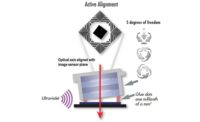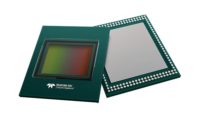Over the past several years, there has been a major realignment and consolidation among the companies that design, manufacture, and distribute image sensors. Major industry players—such as ON Semiconductor, CMOSIS, e2v, and Sony—have grown even larger as they’ve acquired smaller challengers, yet they continue to compete to strengthen their hold on existing markets and their competitive position with new customers as the demand for devices that rely on image sensors expands.
For end customers, industry consolidation means the promise of innovation leading to new, higher-quality sensors that deliver greater features and functionality, and are available at a lower cost. But how can end customers ensure that they are realizing all the benefits and advantages of industry consolidation?
SENSORS AT THE “HEART"
Regardless of improvements in sensor design, advancements in features, or the availability of exciting new functionality, an end customer must first have a clear understanding of their machine vision application and the goals they want to achieve through its implementation before they determine which sensor—or camera—to use.
The image sensor forms the “heart” of any camera used in a machine vision application—in fact, the sensor is the “heart” of any digital camera—capturing light to form an image. Several types of image sensors are on the market today, but the two most common are the CCD and CMOS. (The choice of whether to use a CCD or CMOS sensor is contingent upon the specific demands of the application itself; recent improvements in CMOS image sensors have relegated CCD technology to niche applications where CCD is absolutely required.)
CMOS and CCD image sensors are used in machine vision in two ways: area scan applications, which capture an image of an entire region all at once, or line scan applications, which build an image one line at a time. Area scan can be used in most machine vision applications, but is the only type of application suitable for recording images in which the objects are moving, but in the same frame. One example of an area scan application is an intelligent traffic system that requires an image of a motor vehicle (and its license plate) in relation to a traffic light to determine whether there has been a red light violation. Alternatively, machine vision systems use line scan to build 2-D images of static objects if either the object or the sensor is moving linearly, inspecting an item on a conveyor belt or scanning a document, for example.
THE POTENTIAL FOR HIGHER QUALITY SENSORS
The image sensor industry holds a vast repository of intellectual property and consolidation among former competitors will result in the integration of this intellectual property and the sharing of best practices, which in turn, should facilitate improved image sensor quality. In fact, CMOS image sensor quality has already improved in recent years.
For end customers, the availability of higher quality sensors can mean greater processing speed and throughput, improvements in camera design, and the availability of advanced functionality—including higher frame rates with multi-ROI support, multi-exposure capabilities, improved signal-to-noise ratio, and high dynamic range capabilities—which can be embedded into the image sensors as well as into the cameras themselves. At the same time, improvements in design also mean that advanced capabilities are now found in cameras that are much smaller and less complicated to operate.
Most importantly, higher image sensor quality equals better camera performance overall. Some manufacturers incorporate image sensors from a host of vendors—including their own CMOS devices—into their area scan cameras. In many customer applications, the integration of more powerful image sensors reduces the amount of image pre-processing and image correction that needs to be completed within the camera itself. In fact, in machine vision applications, better performing cameras can mean significant improvements in terms of overall inspection quality. Machine vision cameras, for example, rely on high-quality, highly sensitive CCD and CMOS sensors in resolutions from VGA to more than 12 megapixels, depending on the model, for more detailed inspections and greater yield in machine vision applications for flaw detection, measurement, and more.
INVESTING IN THE MOST COST-EFFECTIVE SOLUTION
For end customers, the ultimate benefit of changes in the image sensor marketplace means they can choose the solution that meets their application requirements and delivers the greatest value—the best functionality and performance available for the price they want to pay.
The cost of image sensors and the price of the cameras or other products in which they’re incorporated will continue to decrease as the remaining competitors jockey for expanded market share, and consumers will be the beneficiaries. Customers will be able to take advantage of higher quality cameras that offer enhanced functionality—including improved resolution, higher processing speeds, and greater throughput—for the same price as they would have paid for a lesser quality camera in the past. In the case of those customers deploying machine vision technology, this can mean the ability to identify more defects and realize a greater yield without making an increased financial investment.
For those customers who want to invest less, cameras that offer the level of functionality and performance they rely on today should now be more competitively priced. These customers can continue to benefit from innovations that make new, less expensive cameras easier to operate and ensure they’re available in a smaller, more convenient footprint.
In all cases, the changing landscape of the image sensor industry will make the higher-quality, more cost-effective sensor and camera technology available to customers and this will be the greatest benefit of industry realignment and consolidation. V&S
Manny Romero is a product manager at Teledyne DALSA. Learn more at www.teledynedalsa.com.



